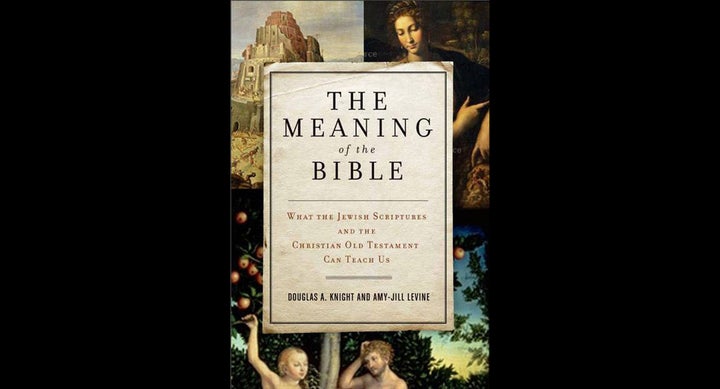
The Bible gives the impression of being grounded in history. The story of the Israelites unfolds chronologically from creation to the Hellenistic occupation during the fourth to first centuries BCE. A rich assortment of stories, poetry, laws and prophecies reinforces the sense of historicity.
So it can be disconcerting to learn how little of the biblical material is actually attested in written sources from the periods being described. Abraham does not appear in any texts from the second millennium BCE. Egypt has given us no specific evidence of Joseph, Moses and the oppressed Israelites. Perhaps most striking of all, there is not a trace of Saul, David and Solomon in external literary sources from around 1020-922 BCE, the time normally associated with them. Nothing verifies that they even lived, much less that David and Solomon ruled over a vast region stretching as far as the Euphrates River. Shouldn't they have left a geopolitical mark of some sort if their power was so extensive? Even Jerusalem's magnificent temple built by Solomon, according to the Bible, has not yet been found.
Another notable leader, Joshua, is also missing in external sources. Even more significantly, archaeological findings haven't confirmed his conquest of the land. The Bible describes the sack of 16 cities, but archaeologists have found evidence of destruction in only three or four of these sites. Of other cities reportedly occupied but not destroyed, about half of them weren't even in existence at the time -- among them Jericho. The well-known song reports that its "walls came tumbling down," but there is no archaeological trace of this city or its walls from the period around 1200 BCE.
Literally hundreds of thousands of documents on clay tablets, stone, papyrus, leather and other surfaces have been discovered in the larger region from Egypt to Mesopotamia. These texts provide information that historians can cross-check with the biblical account. Assyrian, Babylonian and other sources briefly mention several of the Israelite kings by name: Omri, Ahab, Jehu, Pekah, Hoshea, Jehoahaz, Hezekiah, Manasseh and a few others. Also the defeat of the northern and southern kingdoms by their respective conquerors, the Assyrians and Babylonians, is reported. However, most biblical stories describing monarchic times are not confirmed in external texts or archaeological records.
In Israel itself, a stone tablet discovered at the northern site of Dan in 1993-94 generated excitement among scholars since it contains the Aramaic letters bytdwd, commonly thought to mean "house of David." However, it probably stems from around 840 BCE at the earliest, at least 130 years after the date when most interpreters think David died. It may be a mention of his name or his dynasty but corroborates nothing about his legendary life.
The task of archaeology is not to verify details in the Bible but rather to uncover evidence from the past, whether or not it fits with biblical reports. In less than 200 years of digging, archaeologists have uncovered vast amounts of information. Cityscapes, complete with fortified walls, temples, palaces, administrative buildings and commercial areas, have been uncovered. Surveys have located traces of hundreds of tiny villages throughout the land. The comfortable homes of the elite contrast with the spare dwellings of the peasants. Domestic settings, pottery and tools, means of production, even information about diet and life-span have come to light. Today's historical reconstruction provides an increasingly detailed and realistic portrait of life in ancient Israel.
Our new book, "The Meaning of the Bible: What the Jewish Scriptures and Christian Old Testament Can Teach Us" (HarperOne, 2011), goes into more detail about all of the above historical issues, archaeological findings and texts discovered from other cultures in ancient Southwest Asia. We pay special attention, though, to the Bible itself, the literature known variously as the Old Testament for Christians, the Tanakh for Jews and the Hebrew Bible for scholars of all stripes.
On the above subject of history and historicity, for example, the Bible's take on events and personages can vary substantially from what modern historians reconstruct. Rather than trying to investigate historical evidence, biblical writers use the past to advance a particular point of view. They criticize King Saul heavily, lionize David, praise Solomon and deplore the division of the country into northern and southern kingdoms. The biblical narratives depict virtually all the kings of the northern kingdom as bad but several in the southern kingdom, especially Hezekiah and Josiah, as good. The narrators were probably southerners. For them, religious disobedience, above all in the north, accounts for the ultimate fall of both kingdoms to outside emperors.
These biblical perspectives on history should not be surprising. As we explain in "The Meaning of the Bible," "The Bible is not a neutral or objective text -- if there even is such a thing. It is a religious text that promotes a point of view, and this perspective affects the ways in which it relates history." Modern historians can hardly be neutral or objective either. Yet by obtaining new information through archaeology, external documents and novel theoretical tools, we today are placed in the fortunate, though not always easy position of balancing two long-term projects: uncovering the history of this period and enhancing our understanding of the Bible.